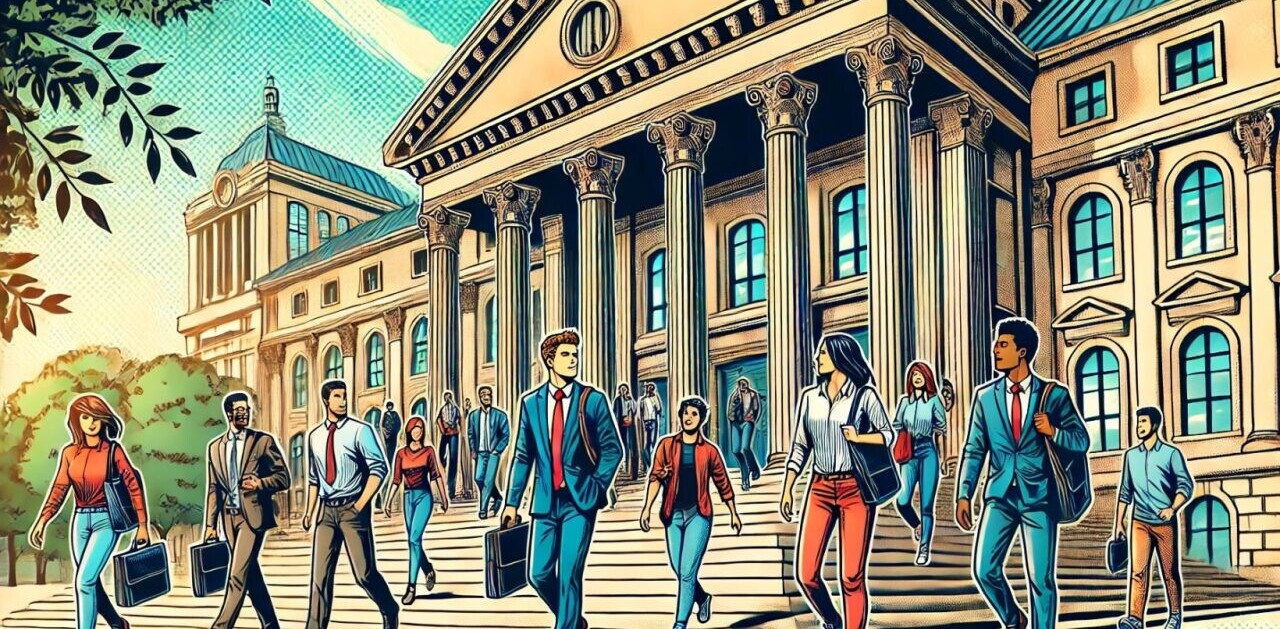This article was originally published by Stephen Goldsmith on Cities Today, the leading news platform on urban mobility and innovation, reaching an international audience of city leaders. For the latest updates follow Cities Today on Twitter, Facebook, LinkedIn, Instagram, and YouTube, or sign up for Cities Today News.
The times they are a-changing, and local officials are on the front lines of the social, technical and operational changes that are sweeping the country. The federal government may or may not assist cities and states with these new realities, but for local officials, the key to success over the next ten years will be effectiveness. Operational excellence requires not only improvements to routine activities on which the public depends, but also the ability to see how today’s assets can be tomorrow’s opportunities.
Look at a streetlight — what do you see? Right now, it may be just a light. But soon you should be able to see a miniature, vertical mall capable of supporting air and sound sensors, 5G cells, responsive signage, and more.
How about a street sweeper or garbage truck — look more closely and instead of just a piece of machinery you might also see a rolling sensor platform that examines streets for potholes or, as in Fort Collins, scans the path for obstructions.
When I was mayor of Indianapolis, the director of our innovation team suggested that we look differently at the underground pipes that connected our intersection signals. In addition to their original usage, they could also be leased to companies that wanted to expand their fibre-optic infrastructure and provide better services to our constituents.
As deputy mayor of New York City, almost every week a vendor brought me an idea about how an existing asset could be converted into something more valuable. One in particular I remember suggested that the city redeploy 10,000 old payphones that littered the city, often unused or broken but still wired to power. Eventually, after an RFI (request for information) process, that idea turned into LinkNYC – citywide kiosks that bring free street-level broadband access and digital information to residents by taking advantage of that underutilized infrastructure and the creativity of city officials and third parties. The shiny kiosks that replaced the tattered phones also brought hundreds of millions of dollars in advertising revenue to the city.
In another instance, creative NYC environmental officials used lidar photos to identify building roofs that were well-positioned to support solar panels. By combining an innovative idea with information brought to the public, the city could create value and assist the environment through an adaptive use.
Kerb appeal
One emerging asset class desperately crying out for reimagination now is the lowly kerb and sidewalk — a crumbling city expenditure where pedestrians trip and accessibility literally falls apart, requiring city lawyers and public works employees to collaborate on improvements. Like the obsolete pay phone structures, why can’t the kerb become something more?
Capturing, reimagining and unlocking the full value of this asset requires a bold local government environment open to challenging thoughts, combined with new technologies and data. New ideas about assets generally emerge when a city gathers insights that combine an understanding of broad changes with knowledge of potential new uses. A new conceptualization often originates outside of the city department tasked with the management of the asset because the use may be unrelated to that department’s day-to-day activities.
I recently interviewed Gabe Klein and Ahmed Darrat of Cityfi to see how they thought about the future of the kerb and sidewalk. As prior city employees, (Klein as Transportation Director in D.C. and Chicago and Darrat in senior management and advisory roles at the Seattle Department of Transportation) they bring both in-depth knowledge of government practices and insights from the cities and private vendors they now advise.
Klein predicted the large number of current disrupting factors such as COVID-19, increasingly ubiquitous delivery vehicles, scooters and bike shares will produce opportunities. Since proposed and current uses which compete for kerb or sidewalk space rely on devices that generate and capture data, one could both redefine the sidewalk itself as well as the data it powers as assets. For example, insights gathered from sidewalk usage and parking demand and turnover can assist transportation departments and health officials now working on reimagining streets for café tables or conversion to bike lanes.
To accomplish these data-driven enhancements, Darrat explains that cities need a platform that allows them to move from analogue to digital and in turn maintain a “two way relationship at the kerb and be exchanging information in real time because operations at the kerb require real time dynamic management.”
New value from old assets
Senior leaders in local government must be open to viewing a future where they can develop new revenue sources from old assets. Unlocking this value will require a few basic steps:
- First, someone in city hall needs to own the responsibility of challenging the status quo.
- Second, that person should broadly solicit ideas from both the private sector and from internal operating departments.
- Third, any new private sector relationships must take into consideration that there are unknown risks to these projects. Officials must incorporate the best of private sector creativity while protecting the public by mitigating and understanding potential risks. Any view of the future will come with risk. The city should bear some of the risk but, in turn, capture a portion of the future upside to keep incentives aligned. A partnership which produces new value, given the uncertainty of any new big idea, should allow the city to exit the arrangement at regular intervals, pursuant to a previously agreed-on schedule. The city should clearly understand any data privacy or security issues and communicate them to the public.
- Fourth, any change will require making the case for what the city will do with the proceeds. For example, a kerb project could provide revenue to support better public transit services.
- Fifth, to accomplish these goals, procurement needs to take a new approach. The mayor should advocate for an expedited, transparent and competitive solicitation for ideas – a complete departure from the traditional RFP. The classic methods of procurement, which start with a prescription of what the public entity wants and require a long time from start to finish, both suffocate innovation and do not easily accommodate constant technological improvements. In essence, to produce new value from an old asset, the city is purchasing not just a service but also innovation. Hundreds of pages of procurement minutia should be replaced with a two-page RFI that asks how to better use the city’s poles, kerbs, rooftops or garbage trucks. Procurement should be rapid. Each month lost harms city revenue and often city residents. One improvement in some cities involves taking an unsolicited proposal viewed as excellent and conducting what the private sector calls a go shop: an expedited procurement process where the entity involved takes a good idea and, to guarantee transparency, actively solicits competing bids for a specified period of time.
Changing lifestyles, new technologies and shrinking budgets should force city hall toward more creative ways to support residents. Reimagining public assets like the sidewalk and kerb through new, innovations-centered processes might be just the recipe to challenge old assumptions.
SHIFT is brought to you by Polestar. It’s time to accelerate the shift to sustainable mobility. That is why Polestar combines electric driving with cutting-edge design and thrilling performance. Find out how.
Get the TNW newsletter
Get the most important tech news in your inbox each week.






